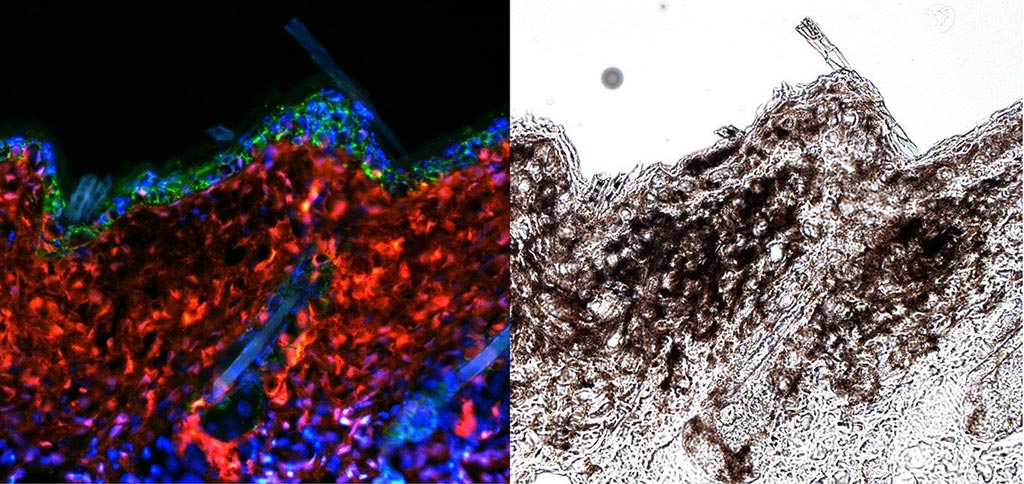Melanocyte Stem Cells and UVB Responsible for Some Cancers
By LabMedica International staff writers
Posted on 01 Nov 2017
Cancer researchers working with mouse melanoma models have identified a mechanism responsible for the initiation of skin cancer through the interaction of ultraviolet light (UVB) and melanocyte stem cells.Posted on 01 Nov 2017
Melanoma is one of the deadliest cancers, yet the cells of origin and mechanisms of tumor initiation have not been identified. The majority of melanomas emerge from clear skin without a precursor lesion, but it is not known whether these melanomas can arise from melanocyte stem cells (MCSCs).

Image: Fluorescence microscopy reveals melanoma (red, left; black, right) emerging from melanocyte stem cells (Photo courtesy of Hyeongsun Moon and Andrew White, Cornell University).
To clarify this point, investigators at Cornell University (Ithaca, NY, USA) employed mouse models to define the role of MCSCs as melanoma cells of origin. In particular, they evaluated the effect of the Hmga2 protein in MCSCs. This protein is encoded by the HMGA2 gene and belongs to the non-histone chromosomal high-mobility group (HMG) protein family. HMG proteins contain structural DNA-binding domains and may act as transcriptional regulating factors that function as architectural factors. The expression of HMGA2 in adult tissues is commonly associated with both malignant and benign tumor formation, as well as certain characteristic cancer-promoting mutations.
The investigators worked with mice carrying mutated MCSCs with intact HMGA2 and with another group in which HMGA2 had been deleted.
Results published in the October 12, 2017, online edition of the journal Cell Stem Cell revealed that Hmga2 (High-mobility group AT-hook 2) in the skin played a critical role in UVB-mediated melanoma formation and that abrogation of Hmga2 function in the microenvironment could suppress MCSC-originating cutaneous melanomas. The investigators concluded that melanomas originated from melanoma-competent MCSCs upon stimulation by UVB, which induced MCSC activation and translocation via an inflammation-dependent process.
“If you had mutations that were sufficient for melanoma, everything would be fine until you went out and got a sunburn,” said senior author Dr. Andrew White, assistant professor of biomedical sciences at Cornell University. “We have an actual mechanism, with Hmga2, that can be explored in the future and could be a way we can prevent melanomas from happening.”
Related Links:
Cornell University













